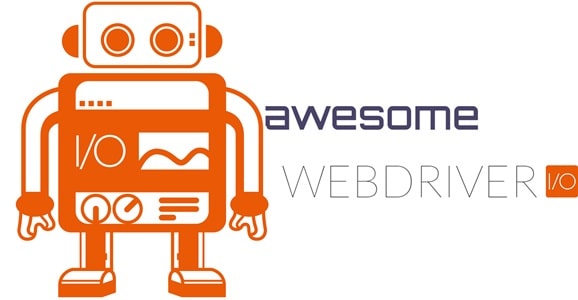In software development, automated testing is an important component, which in turn helps the developers in delivering an excellent quality of the applications with efficiency. For efficient delivery of applications, there are two popular options, they are WebDriverIO and Selenium. Both of these frameworks provide robust features and capabilities, and understanding their benefits and limitations is very important in selecting the framework that is needed.
Teams all over the world are utilizing WebDriverIO to accelerate the execution of extensive testing environments to assist in the quality assurance of their systems because it is one of the most popular and extensively utilized automation frameworks in the software industry today.
Selenium is a recognized standard, which provides a wide variety of components and tools for browser automation. Conversely, WebDriverIO is a JavaScript-based automation framework built on top of Selenium that offers a more modern and straightforward approach to web automation. Developers who are familiar with JavaScript will find it especially interesting due to its clear syntax and comprehensive documentation.
We will assess features like performance, community support, ease of use, and tool integration to continue to compare WebDriverIO vs Selenium. They will be in a better position to make a choice that fits your project requirements and team expertise if you are aware of the particular advantages and disadvantages of each framework.
What is WebDriverIO?

“A progressive automation framework designed for automating modern web and mobile applications” is referred to as WebDriverIO. It simplifies using the application and offers a variety of plugins that can make the testing suite more dependable, scalable, and robust.
Among the majority of popular JavaScript testing automation frameworks globally, WebDriverIO is widely used by large organizations such as Google, Netflix, Microsoft, Mozilla, and so on. Its community ensures ongoing growth and maintenance, and its ease of use makes it an attractive option for beginners. Importantly, WebDriver IO is affordable and available to anyone, from start-ups to well-established businesses.
Features of WebDriver IO
JavaScript developers will discover WebDriverIO to serve as an extremely efficient and packed with-features automated testing platform for web applications. Among its significant characteristics are:
- Ability to adapt: Developers may easily add more commands or combine already existing ones to develop complex sequences of actions, which makes it simpler to create comprehensive test scenarios.
- Compatibility: WebDriver IO provides the ability to use Puppeteer with the Chrome DevTools interface for Chromium-based automation, or to work on the WebDriver protocol for thorough cross-browser testing.
- Rich functionality: With several pre-installed and community-driven plugins, WebDriver IO provides a simple way to customize and incorporate your testing configuration to accommodate a variety of project needs.
- Parallel test execution: WebDriver IO comes with integrated support for parallel test execution, allowing developers to run tests simultaneously on several browser tabs or devices.
- Integrated test runner and reporter: WebDriver IO streamlines test execution and result reporting with an integrated test runner and reporter.
Advantages of WebDriver IO
Advantages that when taken as a whole give WebDriverIO a strong and adaptable platform for web application automation testing. Here are some of the advantages of WebDriverIO summarized in points:
- Simple configuration and setup: WebDriver IO makes it easy for developers to get started with an easy installation process. It offers extensive documentation along with a useful command line interface to make the setup and configuring process go much faster.
- Rich feature set: Supporting multiple browsers, mobile testing, visual regression testing, and integrations with widely recognized testing frameworks like Mocha and Jasmine are just a few of the numerous features that WebDriver IO has to offer.
- Flexible API: WebDriver IO makes building test scripts simpler with its fluid and user-friendly API. Its selectors and chainable commands make it simple to identify and interact with elements on the page, resulting in test code whose structure is clear and easy to comprehend.
- Vibrant developer community: WebDriver IO boasts a strong developer community that makes use of GitHub, forums, and chat channels to provide support and actively contribute towards the project’s growth.
Disadvantages of WebDriver IO
WebDriver IO has several advantages, but there may also be some disadvantages to take into account:
- Learning curve: Although WebDriver IO provides an extensive amount of documentation, there might be an acceptable learning curve for those who are inexperienced with JavaScript or test automation when first using the framework.
- Limited language support: Teams utilizing other programming languages might come across better alternatives as WebDriver IO is primarily designed for JavaScript. Its native support for JavaScript continues to be its biggest feature, even if it supports additional languages like TypeScript and Java through wrappers.
- JavaScript dependency: Because WebDriverIO is based on JavaScript, it may not prove to be the best option for teams that are inexperienced with JavaScript or for projects in which JavaScript is not the main language.
- Platform limitations: WebDriver IO is primarily designed to test web applications, however, it could not be considered as capable of testing other kinds of applications as more specialized automation testing frameworks.
What is Selenium?
A popular open-source framework for automated browser testing is called Selenium. It provides effective features and APIs for interacting with web applications in a range of browsers.
Selenium is a collection of tools intended to automate different platforms’ web browsers. In summary, it is a popular framework for testing web application user interfaces and is particularly good at end-to-end functional testing. With support for numerous programming languages, Selenium gives customers the ability to run tests in one or more browsers.
Selenium provides a wide variety of features for web browser automation. It is designed for automating and efficiently completing operations like filling out forms, interacting with items on web pages, and clicking buttons and links.
Features of Selenium
With its many capabilities, Selenium is a well-liked framework for testing web applications, making it a great option for both developers and testers. Here are some of selenium’s salient features:
- Cross-browser compatibility: Developers can test their web applications utilizing Selenium on a variety of web browsers, like Internet Explorer, Chrome, Firefox, Safari, Edge, and Safari, to make sure they function consistently across various operating systems.
- Parallel test execution: Selenium is capable of parallel test execution enabling testers to evaluate tests frequently across different web browsers or environments, reducing time of execution and increasing productivity.
- Handling pop-ups and alerts: Selenium gives testers the power to control pop-ups, alerts, and browser dialogs, enabling them to replicate actual scenarios and verify how an application operates under various conditions.
- Browser interaction: During testing, Selenium enables the possibility to interact with web elements like buttons, links, forms, and dropdown menus. This makes it possible for user-like interactions with web applications.
- Extensive ecology: A sizable developer community actively participates in the development of Selenium’s growing ecology.
Advantages of Selenium
All of the advantages listed below combine to make Selenium an effective and adaptable automated testing solution that is extensively used by businesses of all sizes to guarantee the dependability and quality of online applications.
- Open source: As Selenium is an open-source program, there are no license fees related to its utilization. Because of this, businesses of all sizes and financial constraints may utilize it.
- Cross-Browser Compatibility: Internet Explorer, Chrome, Firefox, Safari, and other popular browsers are all fully supported by Selenium. This cross-browser compatibility allows testers to ensure that their applications run correctly across a range of configurations.
- Language flexibility: Java, C#, Python, Ruby, and JavaScript are among the few of the many programming languages that Selenium supports. Because of the flexibility it offers, it can be used by teams with varying language preferences or with automation frameworks that are already established in these languages.
- Maturity and stability: Selenium has gained a reputation for stability and dependability as being one of the most widespread and established automation frameworks.
Disadvantages of Selenium
The following list of disadvantages emphasizes all the challenges and constraints that companies could run into when utilizing Selenium for automated testing.
- Steeper learning curve: Selenium may result in a steeper learning curve, especially for beginners, because of its comprehensive features and broad feature set.
- Additional handled configuration: Selenium requires additional procedures for setup and configuration, like downloading and setting up browser drivers that are specific to each browser.
- Lack of synchronization: Test scripts might be unable to execute while waiting for certain items to appear or for the page to load completely when Selenium encounters synchronization problems.
- Time-consuming test maintenance: Selenium test scripts might require to be updated and maintained regularly, especially when online applications change and expand. This may require a lot of time.
Comparing WebDriverIO and Selenium
Let’s brief out some differences between WebDriverIO and Selenium. They are:
- Programming language: Java, Python, C#, Ruby, and JavaScript are among the majority of the languages that Selenium supports. On the other hand, WebDriverIO depends primarily on JavaScript, which makes it especially appropriate for developers who are comfortable with JavaScript.
- Syntax and Readability: Selenium provides clear and streamlined syntax, especially for JavaScript developers, which makes it easier to use and comprehend. However, depending on the programming language being used, it might require a higher learning curve than WebDriverIO.
- Integration with test runners: WebDriverIO supports flexibility and choice within test execution parameters and works smoothly with popular test runners like Mocha and Jasmine. In contrast, Selenium can interface with various test runners, like JUnit, TestNG, NUnit, and others.
- Browser interaction: WebDriverIO is developed on top of Selenium WebDriver and offers comparable features for browser automation and interaction, although Selenium offers comprehensive assistance for interacting with web elements across several browsers.
How to choose between WebDriver IO or Selenium?
When selecting between Selenium and WebDriver IO, there are a few things to take into account.
Assess the testing requirements first. WebDriverIO is a compelling option if you are interested in developing modern web and mobile apps because of its robust plugin ecosystem and JavaScript-based framework. Furthermore, Selenium’s extensive language support and sophisticated toolkit are superior if you prioritize web application user interface testing across several platforms.
Next is to evaluate the technical know-how and programming language proficiency of the team. For JavaScript developers, WebDriverIO offers greater accessibility, although Selenium is compatible with widely used languages such as Java, Python, C#, and Ruby.
Think about each framework’s extensibility and integration possibilities. While Selenium provides a more comprehensive ecosystem with fewer customization options, WebDriverIO offers a wide variety of plugins that enable seamless connection with numerous tools and services.
Lastly, take into account any possible expenditures. Although both frameworks are free to use, take into account any extra costs associated with particular testing requirements, including cloud infrastructure or tools for testing mobile apps.
Utilize LambdaTest to leverage both frameworks
Selenium and WebDriverIO are robust frameworks for automated testing, each with positive and negative aspects. Choosing between WebDriverIO and Selenium ultimately comes down to the particular needs, team composition, and project environment. For a smart selection among the two, there is a cloud-based platform like LambdaTest that provides support for both frameworks
LambdaTest that can be used LambdaTest is an AI-driven test orchestration and execution platform for test automation and an alternative to choose between Selenium and WebDriverIO. This platform allows testing web and mobile applications both manually and automated at scale.
To allow users to test websites under real user conditions and find every potential fault, it gives testers access to more than 3000 environments, real mobile devices, and combinations of browsers. resulting in the provision of a seamless and reliable user experience.
Seek advice and reviews from teammates and organizational authorities to learn about other users’ real-world experiences with each framework. One can choose the best testing framework when utilizing LambdaTest by taking these variables into account and carrying out in-depth assessments, guaranteeing compatibility, effectiveness, and efficiency in cross-browser testing efforts.
Conclusion
Above we have discussed how developers can select the right framework for their needs with Selenium and WebDriverIO. To make an informed choice they need to take into account elements like a preferred programming language, simplicity of setup, learning curve, community assistance, and ecosystem integration.
With the appropriate methodology, either of these frameworks, which are well-established in the automated testing space, can make a substantial contribution to software testing endeavors.
Anantha Nageswaran is the chief editor and writer at TheBusinessBlaze.com. He specialises in business, finance, insurance, loan investment topics. With a strong background in business-finance and a passion for demystifying complex concepts, Anantha brings a unique perspective to his writing.


